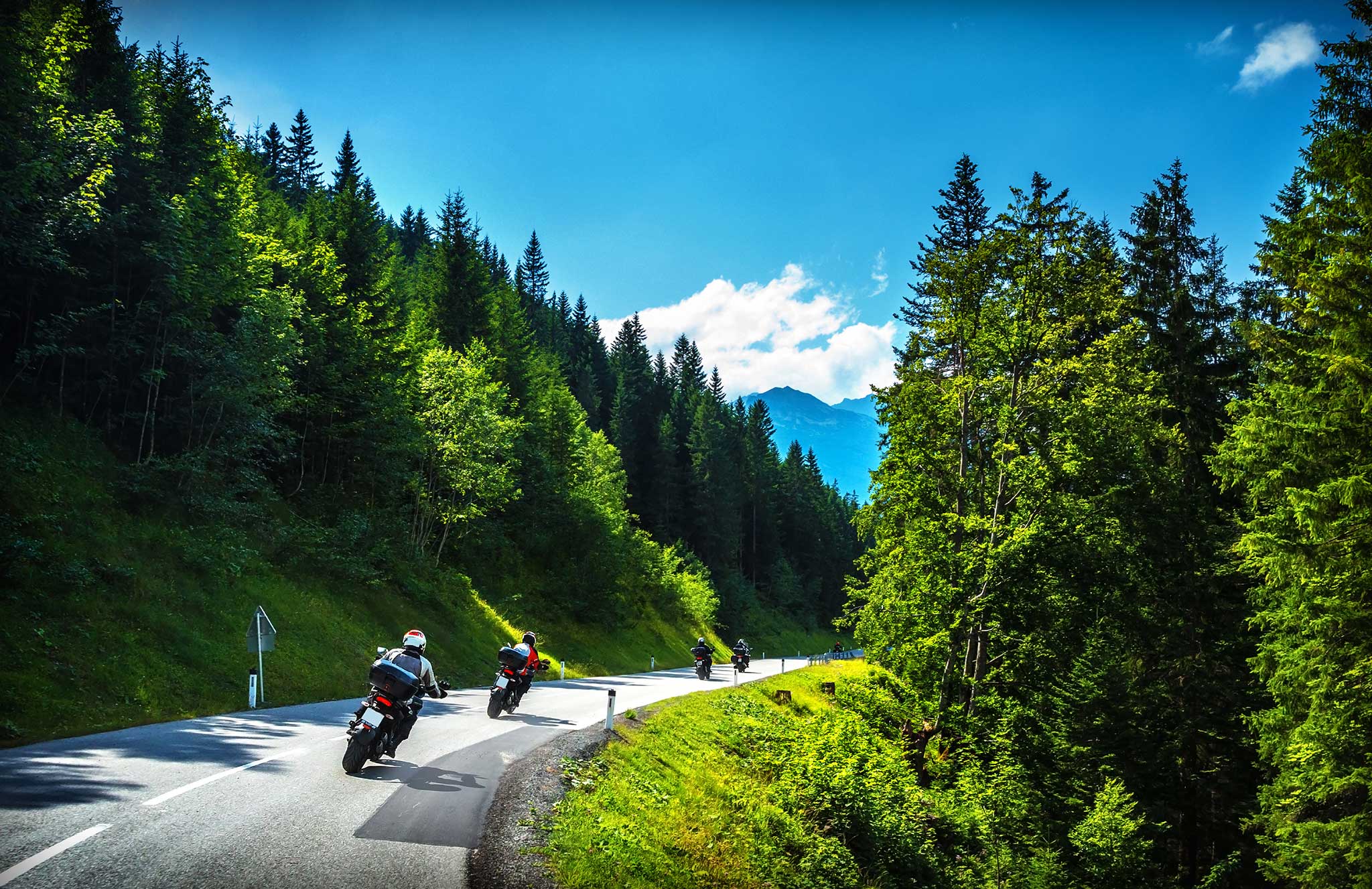Final Cross Country Chase
By Wayfarer | | General Posts
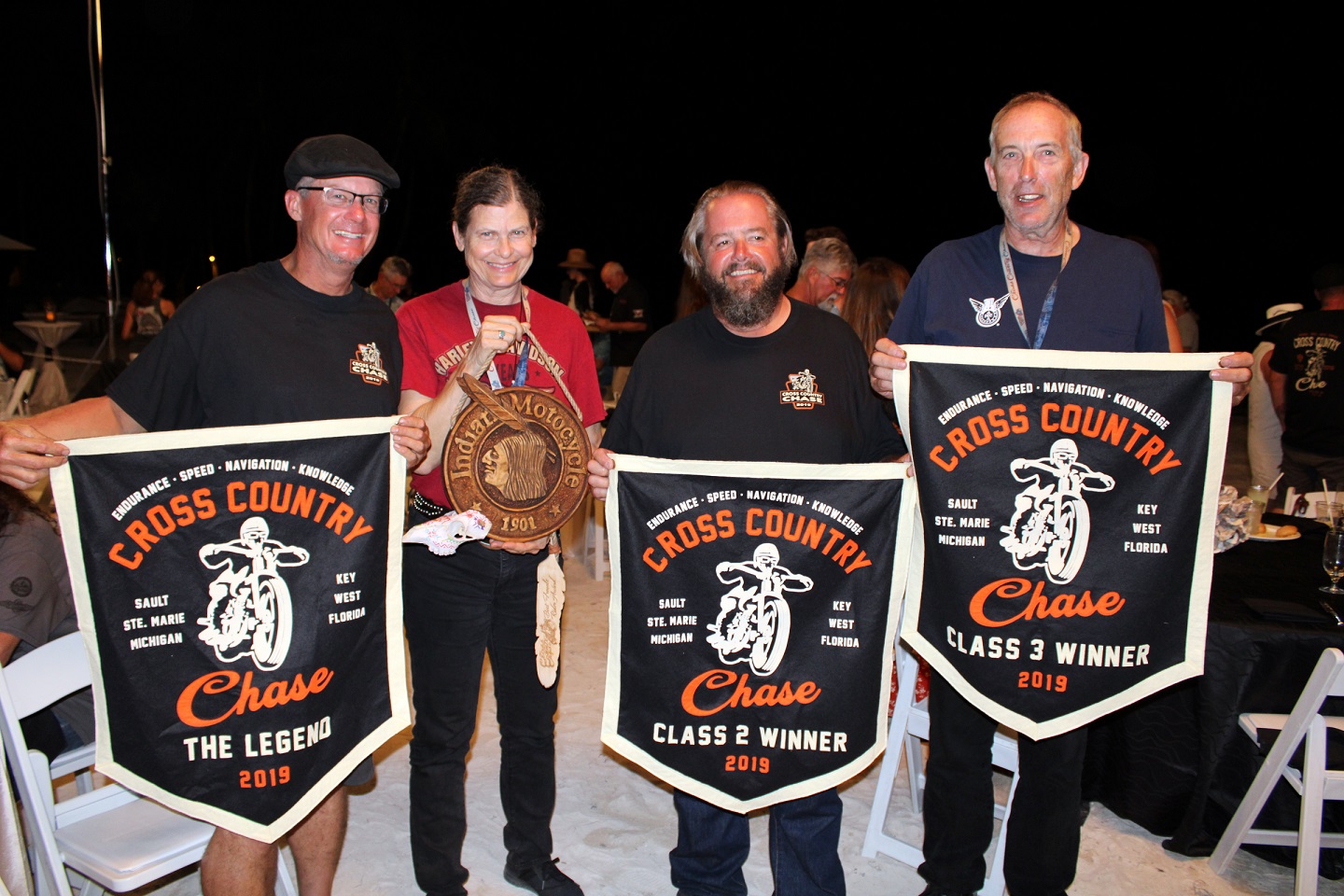 After a short Sunday morning ride over various bridges, the sunburned and heat stressed Cross Country riders arrived in Key West with a 100-degree heat index and heightened level of excitement as the final miles of a 2,368-mile ride came to an emotional and exuberant end. Riders posed for a photo op at the famous Southernmost Point of the Continental U.S. Buoy before the checkered flag waved them across the finish line in the shadow of a massive cruise ship at Mallory Square.
Out of the 69 riders who arrived in Sault Saint Marie, Michigan a week ago, 35 of the jockeys arrived in Key West after riding every mile of the 8 state route. Todd Cameron, however, became legendary with his dogged determination aboard the little 493cc, 1930 BSA Sloper and walked away with an award for winning the Class I, a Legend award, a custom bronze by Jeff Decker, number plates for the next Cross Country Chase race, and a whopping $7,500.00 in cold hard cash.
Jim Gilfoyle, rider #38, took first place in Class II on his 1938 Harley-Davidson EL while Jerry Weiland, a past Motorcycle Cannonball sidecar dude and competitor, walked away with the first place banner for Class III. Cris Sommer Simmons, who has competed in four of the Motorcycle Cannonball antique races, was awarded a custom wood carving in recognition for being the top female competitor in the Cross Country Chase.
After a short Sunday morning ride over various bridges, the sunburned and heat stressed Cross Country riders arrived in Key West with a 100-degree heat index and heightened level of excitement as the final miles of a 2,368-mile ride came to an emotional and exuberant end. Riders posed for a photo op at the famous Southernmost Point of the Continental U.S. Buoy before the checkered flag waved them across the finish line in the shadow of a massive cruise ship at Mallory Square.
Out of the 69 riders who arrived in Sault Saint Marie, Michigan a week ago, 35 of the jockeys arrived in Key West after riding every mile of the 8 state route. Todd Cameron, however, became legendary with his dogged determination aboard the little 493cc, 1930 BSA Sloper and walked away with an award for winning the Class I, a Legend award, a custom bronze by Jeff Decker, number plates for the next Cross Country Chase race, and a whopping $7,500.00 in cold hard cash.
Jim Gilfoyle, rider #38, took first place in Class II on his 1938 Harley-Davidson EL while Jerry Weiland, a past Motorcycle Cannonball sidecar dude and competitor, walked away with the first place banner for Class III. Cris Sommer Simmons, who has competed in four of the Motorcycle Cannonball antique races, was awarded a custom wood carving in recognition for being the top female competitor in the Cross Country Chase.Cross Country Chase Stage 9
By Wayfarer | | General Posts

The last full day of racing included 259-miles of sightseeing through parks, parts of the Everglades and through swampy areas that kept riders eyeing the roadsides for alligators while keeping an eye on the sky for predicted rain, but the weather witch was kind enough to wait until after enjoying a great party and dinner at Peterson’s Harley-Davidson in South Florida to turn on the water works.
And tomorrow’s route scant 129-miles into the Florida Keys will bring the run total to 2,368-miles of true grit. Riders will arrive at the checkered flag with hearts full of elation over a job well done, and hearts full of sorrow to see it all come to an end.
Class I will head out of Miami at 8:30 with the other two classes leaving at 15-minute intervals and arrival in Key West required by 1:30.
Scores are posted at the website and you will notice that there are 10 riders listed as DNS, DNF or DQ. https://themotorcyclechase.com/routes/
Honda at 40: Company, original employee grew together
By Wayfarer | | General Posts
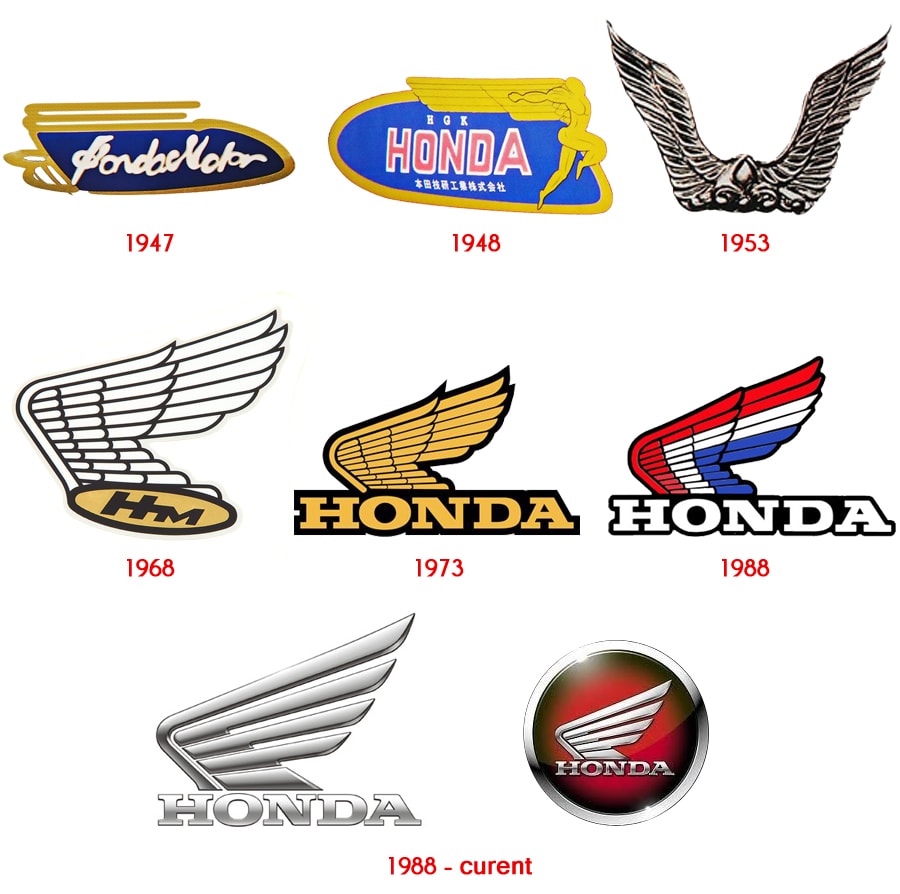
By Jim Weiker from The Columbus Dispatch at https://www.cantonrep.com
When Honda celebrated its 40th anniversary in Ohio this week, the milestone carried special meaning for employee Neil Vining.
Vining was 22 in 1979 when he landed a job at a new motorcycle factory Honda was opening in Marysville.
Today, Vining is a chief engineer at Honda. He is one of two employees still at Honda who were there when Honda of America opened its first U.S. operation in Ohio.
Vining’s journey with Honda is an illustration of the company’s journey.
Like many Americans, Vining didn’t know what to expect from the company. By the 1970s, Japanese cars and motorcycles were well-established among consumers, but not among employees.
Vining worked at Tecumseh’s Marion factory but was weary of the laid-off, back-to-work cycle of the plant. (Tecumseh closed the factory in 1984.) He was curious about Honda, which he had followed in the newspaper since the manufacturer announced in October 1977 that it would build a factory in Ohio.
“Every week I watched the paper looking for that final notice about when I could send my application,” said Vining, who had bought his first Honda motorcycle when he was 16.
In March, 1979, he had his chance and interviewed for a position, not knowing what to expect. After all, there was no track record of Japanese automotive manufacturers in the U.S.
“Remember that the Japanese automotive industry was initially considered a curiosity. They made econoboxes no one wanted,” said Giorgio Rizzoni, director of the Center for Automotive Research at Ohio State University.
“Then they became real competitors to Detroit. For a long time, there was quite a bit of resentment in regard to Japanese automakers in the U.S. But Honda managed this transition in an extremely elegant way.”
Three months after he interviewed, Vining was hired and almost immediately discovered this job would be different.
“I was at my girlfriend’s house on a Sunday afternoon and they called and asked if I could go to Japan,” he recalled. “I really wasn’t expecting that.”
Vining grew up on a farm near Ostrander and had graduated from Buckeye Valley High School in 1975. He had never been out of the country.
After learning how to weld motorcycles in Japan, Vining returned to Ohio to help install equipment that would be used to turn out Honda’s Elsinore CR 250 motorcycle. The first cycle rolled off the line Sept. 10, 1979, a modest start to Honda’s U.S. journey.
Vining recalls how unusually clean and orderly the assembly line seemed — an impression magnified by the ubiquitous white uniforms — and received another clue that this was a different company.
“Within the third or fourth week of working here, they asked, ‘Where would you like to be in a few years at Honda?’ ” Vining said. “That’s was a surprise. I don’t think people recognized the potential the company had.”
That approach was revolutionary in an industry famous for labor-management battles.
“There’s a culture at Honda where every individual, no matter what their rank, every voice counts, everyone wears the Honda white and every voice is important,” Rizzoni said. “Everyone is encouraged to speak up to look for ways for improvement.”
On the day the Elsinore came off the line, Honda announced it was building an automotive assembly plant near the Marysville motorcycle plant.
“When I realized it was going to be a career for me was on our initial launch date of Sept. 10,” Vining said. “That day our president announced that they would start the auto plant, so we knew it was going to be around for a while.”
Vining helped install equipment for the plant, and shifted to the auto line to help launch the first U.S.-built Honda Accord in November 1982, the first car built in the U.S. by any Japanese manufacturer.
That plant launched decades of growth for the manufacturer in Ohio: a research and development facility in 1985; an engine plant in Anna, in 1985; a second assembly line in 1986; a second automotive plant, in East Liberty, in 1989; a transmissions plant, in Russells Point, in 1996; and the Performance Manufacturing Center, in 2016.
Honda’s initial investment of $35 million in the motorcycle plant was dwarfed over the decades. The company now estimates its total Ohio investment at $11 billion. Those 64 original Ohio workers grew to 15,000 in Ohio and 25,000 throughout the U.S.
Over the years, motorcycles were joined by a string of Hondas and Acuras, including Vining’s favorite, the Acura NSX performance car. Together, the three Ohio plants have turned out more than 20 million vehicles. (The motorcycle plant closed in 2009.)
As Honda grew, so did Vining. He worked on the automotive line until 1990, when he was assigned to plant engineering, examining manufacturing capacity in Ohio and beyond. Far from the wide-eyed country kid on his first trip overseas, Vining has now traveled to Japan 20 times.
Vining and his wife, Tami, continue to grow soybeans on their Ostrander farm and he is starting to ponder life after Honda.
“How often in your life do you get a chance to work with a team of people to build something important?” Vining said. “Honda also built me, so when you talk about retirement, and the next adventure, I feel like I have a lot of experience now that I can use to help people.”
Summer’s coming to a close, but motorcycle season is still going strong
By Wayfarer | | General Posts
Bill Dow, Utah Marketing Manager for The Law Tigers, says even though summer is coming to an end, motorcycle season is still in full swing.
There are many people who ride year round, but Autumn is a great time to be on a bike!
But that means drivers and riders need to be aware and practice safety at all times.
The Law Tigers have successful records of securing millions of dollars for their clients. They are ready to help 24/7! There is no fee for personal injury claims unless there is a recovery.
They also offer free advice on all motorcycle matters.
For more information call 1-800-LAW-TIGERS or visit: lawtigers.com.
Pensacolians flock to Harley Davidson for spooky-themed discount tattoos on Friday the 13th
By Wayfarer | | General Posts
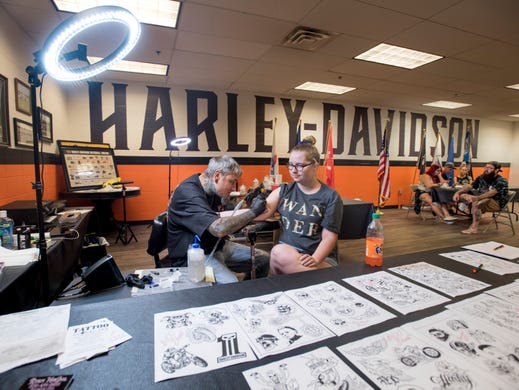
by Annie Blanks, Pensacola News Journal at https://www.pnj.com
Sounds of buzzing needles replaced the roar of motorcycle engines Friday afternoon at Harley Davidson Pensacola, with dozens of people heading to the store to get special spooky-themed tattoos at a discount rate for Friday the 13th.
It’s an unofficial tradition for tattoo studios to do specials on Friday the 13th, said Matt Herl, one of three tattoo artists who took up the back room of the Harley dealership on Friday. Herl and his fellow artists ran a “flash tattoo” sale where people could come in and pick from a pre-designed set of ink for $31, $50, or $100,
“It was always a traditional thing to do back when tattoos used to be a macabre thing, more underground,” he said. “And so now we do it to try to appeal to the dark side of people, and make it cheap. Back then they would do it for $13.”
Some of the pre-made designs people could choose from Friday included gravestones, potion bottles, ghosts, skeletons, spiders, broken hearts and bloody axes.
Stella Garrett, an emergency room registration technician, opted to get two $31 tattoos on her arm — a voodoo doll, and a bust of Edgar Allan Poe. They joined a collection of two other Friday the 13th tattoos she had inked in previous years.
“I planned this, I had to crave my need for a tattoo without breaking the bank,” Garrett said. “I guess I like that there’s just not that much thought to it, it’s always just grab and go.”
Lorenzo Rodriguez and his girlfriend Brittany Rollo came in to get tattoos, but opted not to go for matching ink. Rodriguez was getting a potion bottle on his arm, while Rollo got a cloud with an eye in the middle and a lightning bolt sticking through it on her wrist.
“If I didn’t have bad luck, I wouldn’t have any luck,” she said when asked why she wanted to get a tattoo on Friday the 13th. “Matt (Herl) posted about this, and he’s done a few tattoos for us, and it just seemed like a good idea.”
Ryan McCool, another one of the tattoo artists, said the promotion was also a way for the artists to be able to continue working. Their Barrancas Avenue studio, Artistic Sol, burned down in July and the crew is still rebuilding.
“We’re a collective. When we work, we work together. When we catch fire, we catch fire together,” he said.
The tattoos took an average of 10 to 20 minutes per person, and by 2 p.m. Friday, Herl said he was already on his way to shattering his previous record of 47 tattoos in one day.
The tattoo artists will continue to be at the Harley Davidson store at 6385 Pensacola Blvd. throughout the weekend. The store is having its bi-annual fall event, with motorcycle demonstrations for children, a bike show, food and market vendors.
Motorcycle ride raises money for St. Jude
By Wayfarer | | General Posts
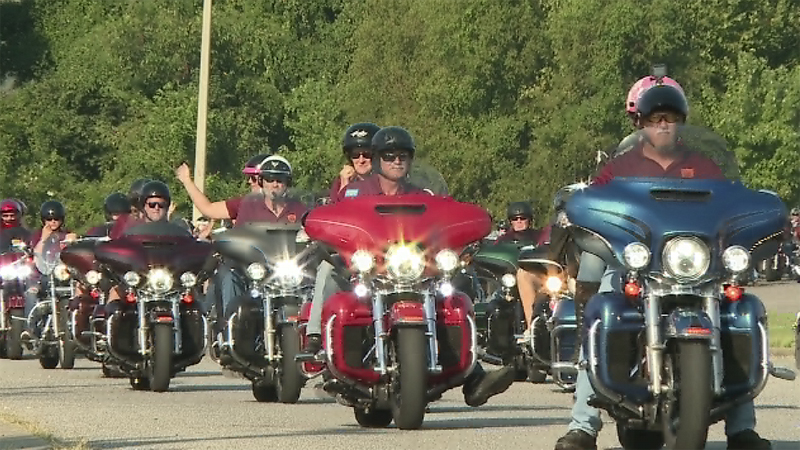
September 13, 2019 by Clint Eiland at https://www.wbbjtv.com
DYERSBURG, Tenn. — More than 200 motorcycles, nearly $1 million and 450 miles.
Those are just some of the numbers involved in St. Jude Rides.
“Almost 400 people total, and to see it all come together, and to be here in Dyersburg, it is just overwhelmingly emotional,” Jill Libert, development specialist at St. Jude Children’s Research Hospital, said.
“One of the most well organized events that I’ve ever been a part of,” Stann Wiebler, marketing manager at Walter Brothers Harley Davidson, said. “They do so much planning. The police do a phenomenal job of getting us here safely.”
The trip started Thursday in Peoria, Illinois, where riders began a six-hour drive to Dyersburg. The motorcade arrived in Memphis on Friday, where they delivered a check worth around $1 million to St. Jude.
Wiebler’s father helped start the event 13 years ago, and Stann has done it the last six years. He says this event is one of his favorites.
“It’s a huge event in our family. It’s part of our business anymore. No decision goes in to our business these days without thinking about St. Jude and how it would affect it,” Wiebler said.
“It’s a very passionate group. They fund raise all year long with asking family and friends. They really are outstanding and selfless,” Libert said.
Each rider raised at least $1,000, with one couple even raising $40,000.
“Kids are precious. Thank you to all the people who are here to do this,” Kevin and Debbie Onnela said.
As they rode into the hospital parking lot, the patients and employees were there to welcome them.
“Patients, doctors, they all come out into the streets, and they have signs and balloons, screaming and yelling, a lot of tears flowing on these big, bad motorcyclists as they’re coming in seeing the kids,” Wiebler said.
“They do a lot for the kids. And I’m pretty impressed about that. They do a lot,” rider Brian Bruen said.
Organizers with the group say they raise more money each year.
AT LAST A CLIMATE DEBATE
By Bandit | | General Posts

Heartland Institute to Host Times Square Debate During UN Climate Summit
Prominent Scientists Who Claim Human Activity Is Causing a Climate Crisis Invited to Debate Scientists Who Are ‘Climate Realists’. Event Moderated by Legendary Journalist John Stossel in Times Square will live-stream on YouTube from 7 p.m. to 9 p.m. on Monday, September 23
ARLINGTON HEIGHTS, IL – On September 23, the day the United Nations holds its Climate Summit in New York City during its upcoming General Assembly session, The Heartland Institute has challenged prominent scientists to explain their hypothesis of a human-caused climate crisis in a debate with skeptical scientists moderated by John Stossel.
Heartland has invited to the debate several scientists who are often quoted in media reports about their grave concerns about the current state and future of the climate: Kevin Trenberth, Michael Mann, Don Wuebbles, Katherine Hayhoe, Brenda Ekwurzel, and Rep. Alexandria Ocasio-Cortez. [NOTE: Trenberth and Ekwurzel politely declined, but peers have also received invitations from Heartland.]
Those on the “realist” side of the debate will be Patrick Michaels, David Legates, and Willie Soon – all prominent scientists who have often defended their findings and views in public.
WHAT: Climate Challenge: Bright Lights, Big City … Bigger Debate
WHEN: Monday, September 23, 2019 from 7 p.m. to 9 p.m.
WHERE: New York Marriott Marquis, 1535 Broadway, New York, NY 10036
LINK TO THE LIVE-STREAM: https://youtu.be/faQssBpFvmo
The Heartland Institute is known globally as the leading think tank promoting scientists who are skeptical of a human-caused climate crisis. Visit the website for its 13 Interntional Conferences on Climate Change at this link, and review the volumes of the Climate Change Reconsidered series by the Nongovernmental International Panel on Climate Change, published by Heartland, at this link.
“Scientific knowledge and public understanding of important issues benefit from more information, discussion, and debate, not less,” said James Taylor, director of the Arthur B. Robinson Center on Climate and Environmental Policy at The Heartland Institute. “I hope and expect this event will advance scientific knowledge by facilitating more cooperative and productive discussions among expert scientists regarding an asserted climate crisis hypothesis.”
“It is long past time that we have a real debate from people on both sides of this issue about what is happening to our climate,” said Heartland Institute Director of Communications Jim Lakely. “This debate has never been more important than now, especially considering the views and plans put forth by the Democratic candidates for president.
“Every one of them, and the United Nations, blame human activity for global warming, insist it will be catastrophic to life on Earth, and demand big changes to the way Americans live, work, eat, travel, and build,” Lakely added. “Doesn’t the wholesale reordering of our society demand at least a little bit of public debate? We think so.”
The Heartland Institute is a 35-year-old national nonprofit organization headquartered in Arlington Heights, Illinois. Its mission is to discover, develop, and promote free-market solutions to social and economic problems. For more information, visit our website or call 312/377-4000.
–from the Climate Depot
Politicians are Dead Wrong About the Danger of Red Flag Laws
By Bandit | | General Posts
By the Firearms Policy Coalition
In the era of “just do something” public policy, legislators on both sides of the aisle are pitching red flag legislation as a moderate form of gun control; one having a positive impact on mental health reform while simultaneously keeping Americans safe. Nothing could be further from the truth, and what these politicians won’t tell you is that their position is unsupported by evidence and riddled with far-reaching, unconstitutional implications for everyone.
How Red Flag Laws Work
So what happens when someone is subjected to a red flag seizure? Any of a number of acquaintances – a family member, teacher, roommate, or even a co-worker or former co-worker, can file a petition with the court to have an individual’s rights stripped from them.
This means that people with a merely tangential relationship to a respondent can file a petition, and because most red flag laws have no measures to deter malicious filing, they leave the door open for malicious people to bring forth unsupported accusations.
When the petition is filed, an initial hearing is typically held without the subject person present, so he is completely unable to defend himself. The standard of proof is substantially lower here than what would be required had an actual crime occurred, and as such it’s incredibly easy for the order to attach with little to no evidence.
The Danger of Gun Confiscation Orders
Once a seizure order is issued by the closed court, state-sanctioned “swatting” occurs. The police can show up unannounced at the person’s door, potentially catching him off-guard. This is a recipe for catastrophe, because the police can be mistaken for intruders.
Even if the police identify themselves during a seizure, a combination of insufficient training and heightened anxiety still puts human life in unnecessary peril; red flag laws have already resulted in at least one confirmed death when a surprised homeowner answered the door and was shot by police during a brief argument.
Assuming the police are successful in safely executing the seizure order, not only do they take the respondent’s firearms, ammunition, and magazines, several states also revoke the subject person’s concealed carry license, which can be costly and time-consuming to replace or reinstate. Following the initial seizure, the order remains standing for two to three weeks unless a final hearing is held.
No Right to an Attorney
Unlike in a criminal trial, the subject person has no right to legal representation during final hearings, which often means spending thousands of dollars in legal fees if they want a competent defense. Even if a person is innocent and goes deep out of pocket for a lawyer, they might still lose their rights.
Standard of Evidence
The evidentiary standard for a final hearing is even lower than the initial hearing – “preponderance of the evidence” – which means the difference between the state keeping or returning the respondent’s firearms is essentially a coin toss. If the person loses, the state may keep his property for up to a year, and in New Jersey, indefinitely unless a court terminates the order at a later date.
Red flag laws raise several red flags of their own: they victimize the poor, deny due process, and allow the state to seize property for a substantial amount of time when a crime hasn’t even occurred, leaving people defenseless in their own homes.
Legislators can’t prove they are effective in deterring violence, and they ironically amplify the stigma against people with mental health issues. Not only are these laws ineffective, they may even deter people from seeking the help that they desperately need, creating the threat politicians claimed to be addressing.
To learn more about the specifics of these laws, their history, and FPC’s policy position, you can read more here. To take action against Red Flag Laws, go to StopRedFlagLaws.com
–Truth About Guns
Cross Country Chase Stage 8
By Wayfarer | | General Posts
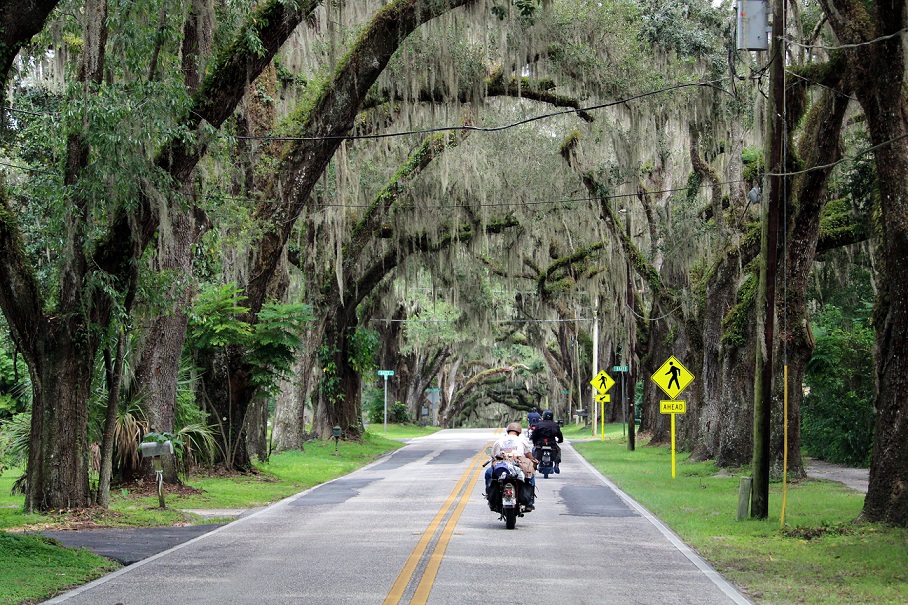
Excitement is building as we race toward the finish line with two more days of riding under predicted dark skies, wind and occasional rain in the forecast. Today’s weather, however, afforded riders their first look at the ocean as they made their way toward Crystal Harley-Davidson for an elegant hot lunch served on the dealership veranda. Riders enjoyed the hospitality and lingered over lunch before hitting the road again with the hopes of staying dry, which didn’t happen, but the sporadic rain served to cool things off enough to make the trip even more enjoyable. By the time the group pulled into Lakeland Harley-Davidson for the hosted dinner, the clouds gathered for another attack and sent riders off to the hotel with soggy duds. Again.
So, race fans, here are the scores from Stage 8. You’ll notice the top five have been juggled again but the top two spots are a BSA ridden by Todd Cameron in first and a Harley-Davidson ridden by Jim Gilfoyle holding second, followed closely by a Triumph, then five Harleys, an Indian and a Norton to round out the top ten spots with a good showing from a variety of marques.
The list of bikes that have dropped out includes 1-BSA, 3-Indians, and 4-Harley-Davidsons and the list
#5 James Maloney
#17 Rick Salisbury
#42 Michael Bruso
#50 Rowdy Schenk
#62 Scott Funk
#70 Will Lusignan
#77 Brent Mayfield
#91 Jeff Fredette
There are an additional 5 riders with various issues that have taken them out of the competition in terms of contending, but they continue to ride to finish out the trip and that list includes 2-Harleys, 2-Indians, and the only Zundapp entered:
#51 Shane Masters
#36 Bill Reese
#96 Richard Campbell
#22 Don Gilmore
#65 Mike Butts
As of tonight’s tally, there are still 35 riders who have made all 1,980 miles with no penalty points, though another 8 have actually made the miles but were docked points for various reasons.
SO, what does all this mean? Basically, that the number of bikes that will actually be motoring across the finish line on Sunday afternoon is still very unpredictable! The public is welcome to come on out to Key West to cheer riders on as they’re waved in with the checker flag and to join us for the celebration at the awards banquet afterwards. Tickets are available for purchase by going to https://www.cannonballstore.com
See ya there!
Why We Ride – in the Cantina
By Wayfarer | | General Posts

The people who ride: Motorcycle culture captivates a cross section of bikers.
CLICK HERE READ THE ARTICLE IN THE CANTINA – SUBSCRIBE TODAY


